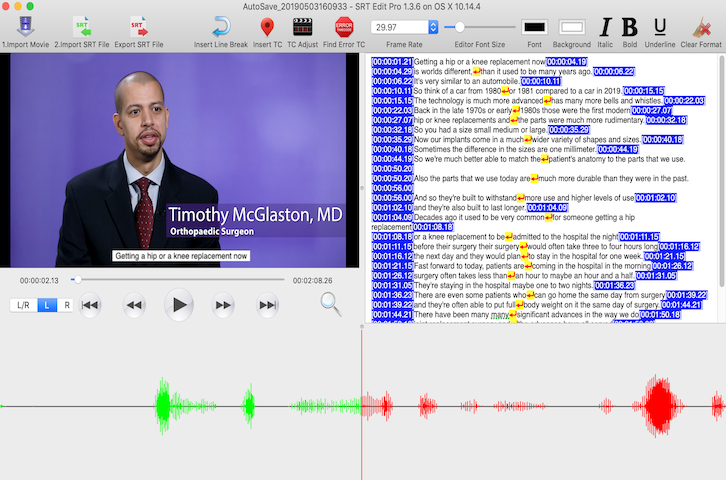
14 May Why Accurate Video Captioning is so Important
Healthcare systems – or the video production teams they hire – that blindly rely on YouTube, Facebook or other voice transcription platforms to caption their videos are not only hurting their credibility with potential patients, they’re putting themselves at risk of accessibility lawsuits. Sadly, this is happening all the time. Accurate video captioning is important – now, more than ever.
We’ve all had those voice-to-text fails, or cried laughing at some of the hilarious autocorrects that make the rounds on social media. It’s funny when someone accidentally texts the wrong thing to Uncle Bob, but not so much when your hospital or clinic posts a video with wildly inaccurate captioning. Medical terms can make captioning extra tricky, which is more reason to pay attention to the words on the screen when your videos play.
Here are just a few of the captioning mistakes we’ve caught while watching healthcare videos:
What the provider said vs. what the caption said
- “Pelvic floor dysfunction” = Public participation
- “Have a runny nose” = Everybody knows
- “Plantar fascia” = Pleasure of Fasha
- “While you’re monitoring your blood pressure” = While you’re in Nigeria
- “Pectoralis” = Pet tourists
A video demonstrating a shoulder stretch has nothing to do with pet tourists. What are pet tourists, anyway? Maybe they’re the ones traveling to Nigeria to monitor their blood pressure? Good grief. These captioning mistakes made us chuckle, but errors in a healthcare video isn’t so funny. They could make patients wonder what other details you and your medical team might overlook.
Even beyond the “oops” factor, there’s a bigger reason to clean up your captioning act and it’s called WCAG 2.1. WCAG stands for Web Content Accessibility Guidelines and it’s the standard for making digital content accessible to those with disabilities.
Agencies that receive federal funding, such as Medicare or Medicaid, must make web content easily accessible to everyone. WCAG 2.1 covers all kinds of digital accessibility issues, but when it comes to video, accurate captioning is currently a minimum requirement. Notice we said accurate captioning. Getting lazy and not checking or correcting captions may be considered noncompliant, and could lead to lawsuits. And that’s not funny at all.
In addition to making your video content compliant, adding captioning to videos also increases SEO as well as viewer engagement. Surveys show between 82 and 93% of U.S. consumers watch videos with the sound off. So, what’s a healthcare marketer to do?
So, what’s a healthcare marketer to do?
First, insist that an accurate closed captioning file (.srt file) is included as a deliverable with any video project that will or could go on the web. Our company, Healthcare Video Edge, has this as our policy. If you hire a different video production company, or produce your videos in house, be sure your video, web or social media team (whomever you make responsible for the captioning) gets up to speed on making and delivering SRT files. SRT stands for SubRip Subtitle file. These files contain timecode information that helps match the spoken words with the captions and put them on the screen at the right time. You can purchase inexpensive software to transcribe videos and make them into these SRT files. Make sure the transcriptions you use to make the files have been carefully reviewed before marrying them to your video.
There are also several companies that offer closed captioning services, such as Rev or 3playmedia. You just upload your videos into their system and receive captioning files within a few business days. It’s even ok to let YouTube take the first crack at transcribing and captioning your video, as long as you go in and correct any problems before publishing.
To be completely candid, SRT files are a pain it the neck to make. They’re time consuming, labor intensive and not very fun. But they’ve become a critical component of successful and professional video production, so it’s in our workflow for every video and every client. We’re even happy to make SRT files for old videos that still live on the websites of our healthcare partners, whether we originally produced those videos, or not.
However you get it done, please make the effort to add accurate closed captioning to all of your social and web videos. Not only can it keep you out of the courtroom, captions also increase engagement, understanding and SEO. The benefits of good, solid video captioning are humorous. Whoops – I mean numerous.


Sorry, the comment form is closed at this time.